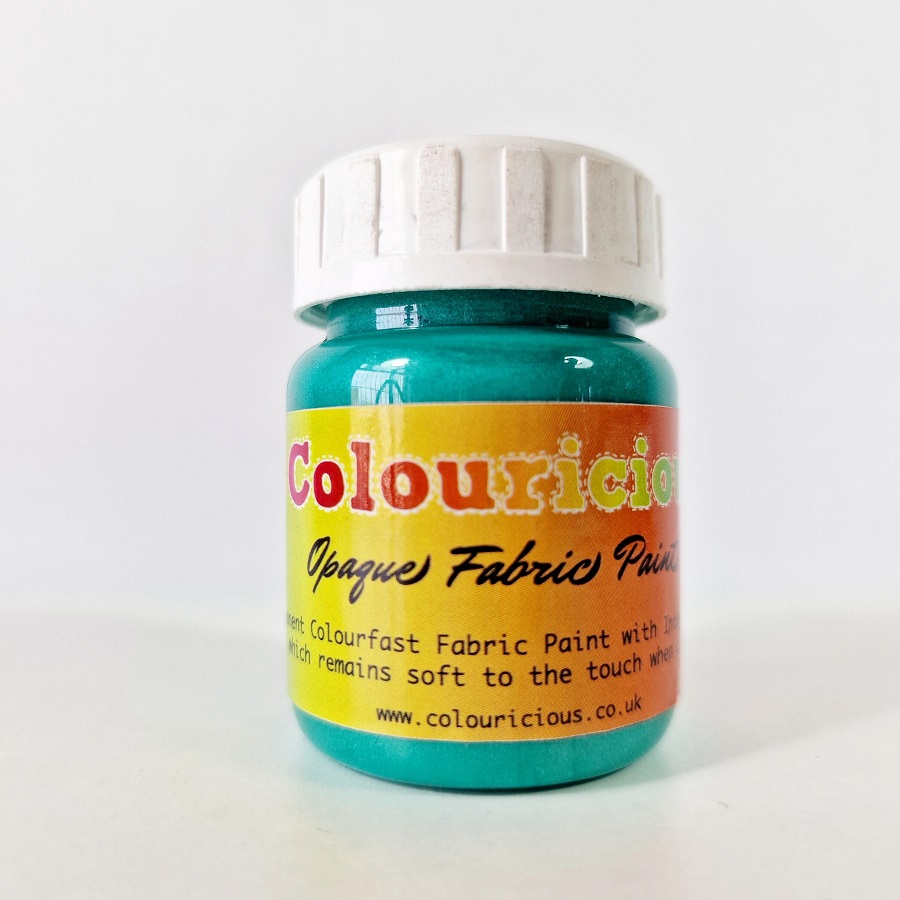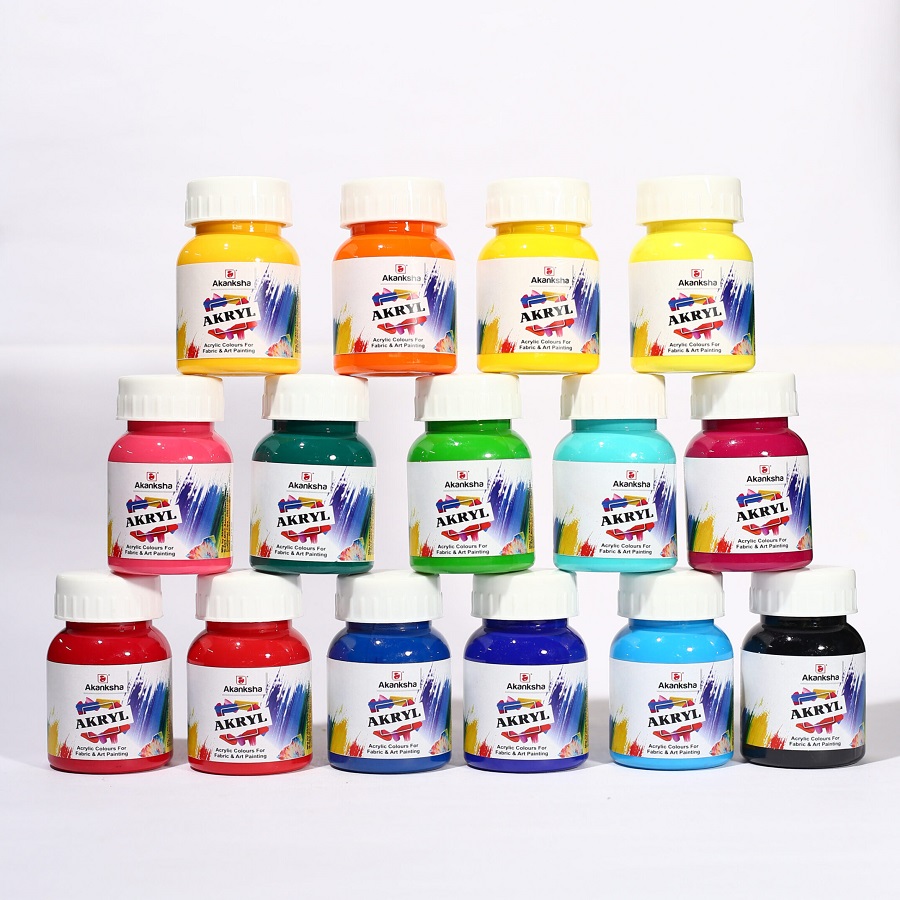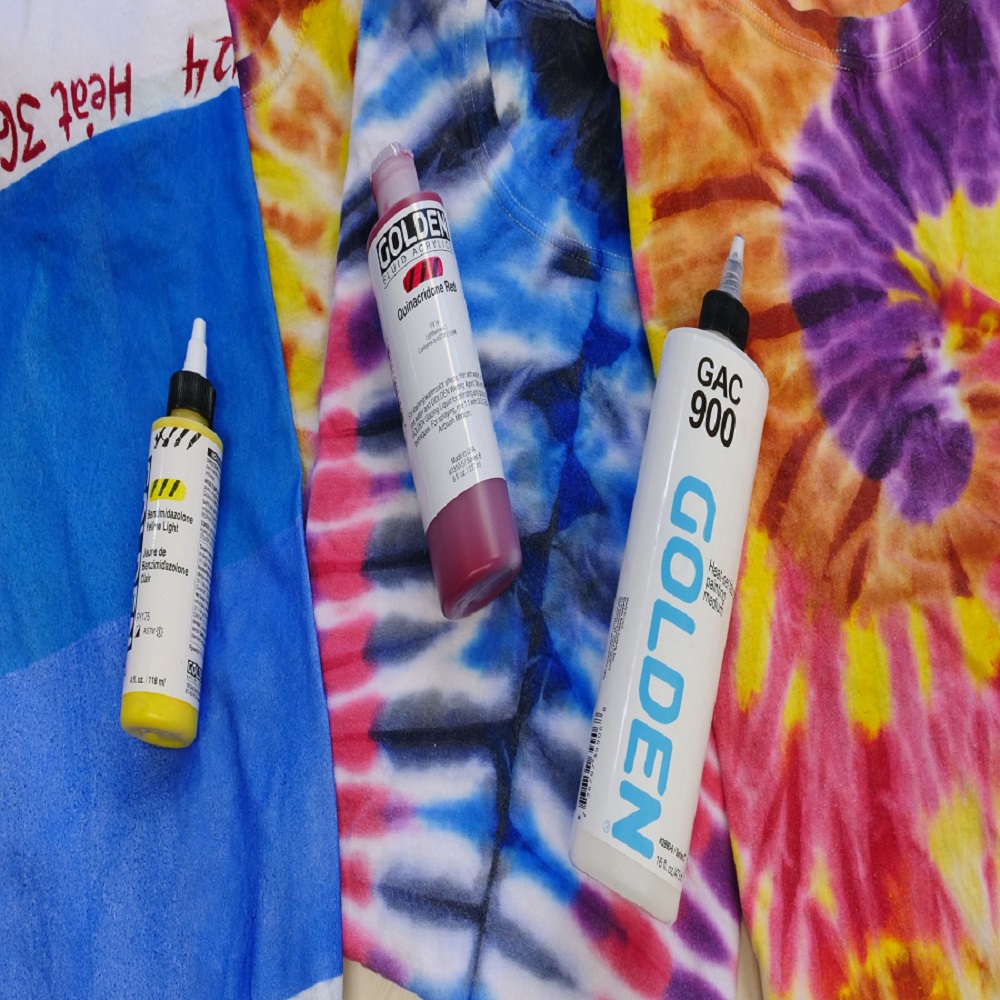Introduction to Using Acrylic Paint on Fabric
Acrylic paint offers versatility and vibrant colors for a variety of surfaces. Often, we find the shades we adore in acrylic form yet wonder if we can use them on fabric. The good news is that acrylic paint can indeed be used on fabric, but there are considerations to keep in mind. This introduction will cover the basics of using acrylic paint on fabric, addressing common concerns and providing key steps to ensure the best results.
When using acrylic on fabric, flexibility and durability are primary concerns. Without the right treatment, acrylic paint might crack or peel after drying. The application can result in a stiff texture, undesirable for clothing or upholstery. Luckily, a simple solution exists: converting acrylic to fabric paint with the addition of a fabric medium. This process can render acrylic paint more suitable for use on fabric, ensuring it remains supple and resistant to wear.
To start, you need to prepare the fabric, making sure it is clean and free of any sizing agents. Mix your chosen acrylic paint with a fabric medium according to the recommended ratio, usually one part fabric medium to two parts acrylic paint. This combination creates a flexible and washable paint that adheres well to the fabric fibers.
Once painted, the fabric must dry completely. A crucial step follows, known as heat setting, which we will discuss in detail later. Heat setting cures the paint, securing it onto the fabric for a long-lasting finish.
Whether you aim to personalize your wardrobe, add flair to home decor, or craft unique gifts, using acrylic paint on fabric can open new avenues for creative expression. In the following sections, we’ll delve into the benefits, step-by-step guide, necessary supplies, common challenges and their solutions, and provide tips for heat setting your fabric paint projects.

The Benefits of Converting Acrylic to Fabric Paint
Converting acrylic paint into fabric paint is a creative and cost-effective way to extend the versatility of your acrylics. Here are the key benefits of making this transformation:
- Versatility and Choice: With a vast array of colors available, acrylics give you more options for your fabric projects.
- Economical: If you already have acrylic paints, using a fabric medium to transform them saves money on buying specialty fabric paints.
- Ease of Use: Acrylics mixed with fabric medium have a smooth consistency that’s easy to work with on textiles.
- Customization: Mixing your own fabric paint allows for custom color creation, ensuring a perfect match for your projects.
- Washability: Once heat set, homemade fabric paint can withstand washing and daily use without cracking or fading.
- Longevity: Quality fabric medium mixed with acrylic creates a durable paint that lasts longer on fabrics than acrylic paint alone.
- No Waste: Convert just the amount of paint you need, reducing waste and the leftover paints that might never get used.
In summary, using acrylic paint on fabric, when properly mixed and applied, offers a wealth of creative potential. It provides an opportunity to personalize and update fabric items while being mindful of cost and resources. In the next sections, we’ll guide you through converting and applying your customized fabric paint.
Step-by-Step Guide to Transforming Acrylic Paint
Transforming acrylic paint into fabric paint is a fairly straightforward process, provided you follow the steps carefully. Here’s your simple guide to get started:
- Gather Your Materials: You’ll need acrylic paint, fabric medium, and your fabric.
- Pre-wash Fabric: Ensure your fabric is free from sizes and finishes for the paint to adhere correctly.
- Mix Paint and Medium: Follow the ratio of two parts paint to one part fabric medium.
- Test Your Mixture: Apply on a small area of fabric to check for color and texture.
- Paint Your Design: Use brushes or sponges to apply the paint onto your fabric.
- Let It Dry: Allow the paint to completely dry, which could take up to 24 hours.
- Heat Set: Use an iron on a suitable setting or a dryer to heat set the paint for durability.
- Wash it Gently: After a week, you can wash the fabric on a gentle cycle.
By following these steps, you can convert any acrylic paint to a fabric-friendly material, ready to enhance your textiles with color and design. Remember to keep the fabric flat while painting and to avoid mixing too much at once, to prevent wastage. With this method, your fabric will retain its flexibility, and the colors will stay vibrant through multiple washes. Use this technique to personalize clothing, bags, or create custom home decor items.
Necessary Supplies for Fabric Painting with Acrylics
Before you embark on your fabric painting journey using acrylics, it’s essential to have the right supplies at hand. Here’s a list of items you’ll need to ensure your project is a success:
- Acrylic Paints: Choose high-quality acrylic paints in the colors you desire for your project.
- Fabric Medium: This is the magic ingredient that transforms acrylic paint into fabric paint, enhancing its flexibility and washability.
- Mixing Palette: A surface to blend your paint and medium; a simple plastic plate will work.
- Brushes and Sponges: Get various sizes for painting and dabbing your designs.
- Fabric: Select the piece you want to paint, pre-washed to remove any residues.
- Iron: For heat setting your painted fabric; a regular clothes iron will do.
- Pressing Cloth: A thin cloth to place between the iron and your fabric, protecting both.
- Cardboard or Plastic Sheet: To keep your workspace clean and prevent paint from soaking through.
Gather these items before you start to ensure a smooth and efficient painting process. Being well-prepared means you can focus on the creative aspect of your project without interruptions. Remember to mix the fabric medium with acrylic paint in a 1:2 ratio for best results. Now, with your supplies ready, you’re all set to transform your acrylics into durable, usable fabric paint.

Common Challenges and Solutions when Painting on Fabric
Painting on fabric using acrylics can often present challenges. Cracking, stiffness, and fading are common issues. Understanding these can help ensure successful fabric painting ventures. Here we present common problems and their solutions.
- Cracking of Paint: Without a flexible medium, paint may crack when the fabric bends. Solution: Mix acrylic paint with a fabric medium in a 1:2 ratio to prevent this.
- Stiffness: Fabric can become hard after painting. Solution: Thinning the paint with a fabric medium helps maintain the fabric’s softness.
- Fading: Wash and wear may fade untreated acrylic paint. Solution: Proper heat setting after painting cures the paint for better durability.
- Color Bleeding: Paint may spread beyond its intended area. Solution: Ensure the paint isn’t too thin and apply carefully with precise tools.
- Uneven Texture: Uneven application can result in a rough feel. Solution: Use even strokes and consistent pressure when painting for a smooth texture.
- Drying Issues: Long drying times can be frustrating. Solution: Allow the fabric to dry fully, usually 24 hours, before handling or heat setting.
- Sticking Fabric: Painted areas might stick to each other. Solution: Place a barrier like parchment paper between layers when drying or heat setting.
Overcoming these challenges will lead to beautiful and lasting results on your fabric projects. Remember these solutions when you pick up your brush to paint on fabric with acrylics.
Comparing Acrylic and Polyurethane Fabric Paints
When deciding on the best paint for fabric projects, it’s important to compare acrylic with polyurethane fabric paints. The choice can impact the final look, feel, and durability of your painted fabric items. Here’s a concise comparison to guide you.
- Acidity and Flexibility: Acrylic paint is more rigid. It can crack when dry. Polyurethane fabric paint, however, remains flexible and doesn’t crack.
- Application Method: You can apply both with brushes or sponges. Polyurethane is also good for spraying, which can add depth to designs.
- Drying Time: Acrylic dries fast, but polyurethane fabric paint dries even quicker. Faster drying helps you finish projects sooner.
- Durability: Polyurethane is more durable. It can handle bending and folding without peeling or flaking.
- Texture: Once dry, acrylic might feel stiff on fabric. Polyurethane usually results in a softer finish.
- Ease of Use: Acrylic needs a fabric medium to work on fabric. Polyurethane doesn’t, saving time and effort.
- Coverage and Color Bleeding: Acrylic may need dilution, which can cause bleeding. Polyurethane covers well with less risk of bleeding.
In summary, while you can use acrylic paint on fabric by adding a fabric medium, polyurethane fabric paint may provide more advantages. It’s more flexible, durable, and easier to use. It’s crucial to choose the right type of paint for the outcome you desire for your fabric projects.

Tips for Heat Setting and Curing Your Fabric Paint
Heat setting is crucial for making your painted fabric item washable and durable. Here are practical tips to ensure your fabric paint cures correctly:
- Use an Iron: Set your iron to a gentle setting suitable for your fabric. Place a pressing cloth or parchment paper over the paint to protect it.
- Dryer Method: If you prefer, place the item in a dryer for about an hour on a medium to high heat setting.
- Patience is Key: Wait for the paint to fully dry, which typically takes 24 hours, before you start to heat set.
- Move Constantly: When ironing, keep the iron moving to avoid scorching the fabric and ensure even heat distribution.
- Inside Out: Turn the fabric inside out when ironing, or put it in the dryer to shield the paint job.
- Curing Time: After heat setting, give it some time—about a week—before you wash the fabric again. This allows the paint to completely cure.
- Testing: To be safe, test your heat setting method on a small, inconspicuous area first to ensure it doesn’t damage the paint or fabric.
Following these steps will help lock in the paint, and your work should remain vibrant and intact through many washes. A properly cured fabric paint project becomes a beloved piece that can stand the test of time and use.
Creative Ideas and Uses for Homemade Fabric Paint
Homemade fabric paint opens up a world of creativity and personalization for various items. Here are some inspiring ideas and practical uses:
- Custom T-Shirts: Add unique designs to plain t-shirts for special events, gifts, or personal wear.
- Personalized Tote Bags: Make your grocery bag, book bag, or tote stand out with custom patterns or quotes.
- Refresh Old Apparel: Give new life to old jeans, jackets, or sneakers with vibrant colors or intricate designs.
- Home Decor: Enhance cushions, curtains, or tablecloths with fabric paint to match your home’s aesthetic.
- Artistic Projects: Use fabric as a canvas for your artwork, creating wall hangings or tapestries.
- Educational Crafts: Help kids create handprint keepsakes on aprons or teacher gifts with safe, washable paint.
- Seasonal Decorations: Paint festive themes on fabric for holidays and change your decor with the seasons.
- Costume Making: Create costumes with detailed patterns and graphics without the need to sew everything.
By using acrylic paint converted into fabric paint, these projects not only embody your artistic vision but also ensure lasting quality. Mix your paint with a fabric medium, apply your design, and remember to heat set for a finish that endures use and wash. Limitless creativity awaits with homemade fabric paint.









